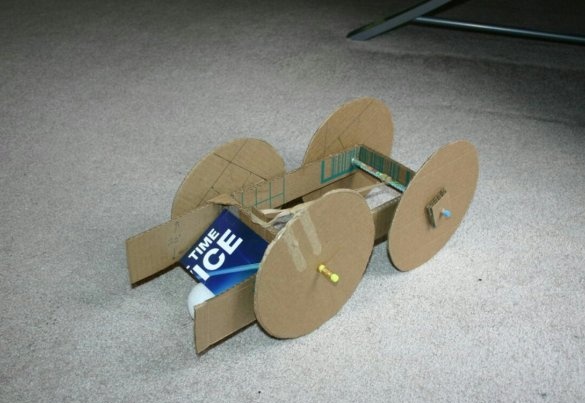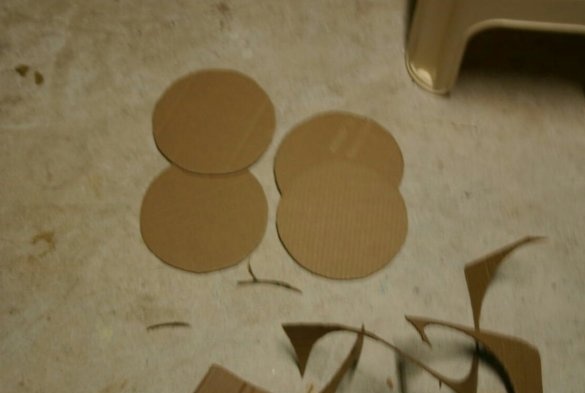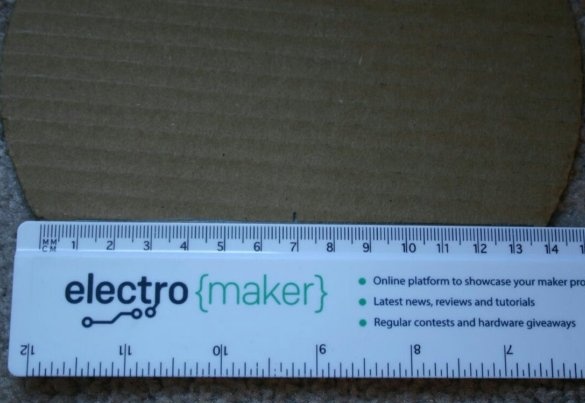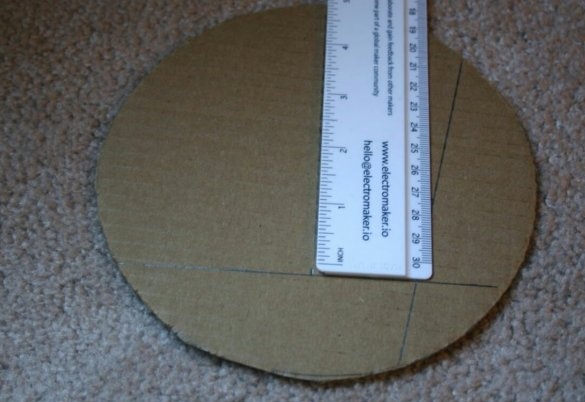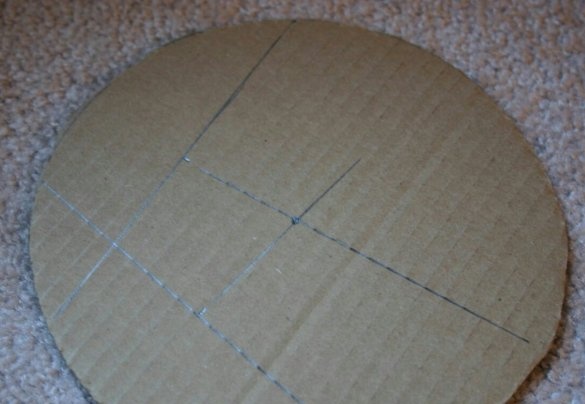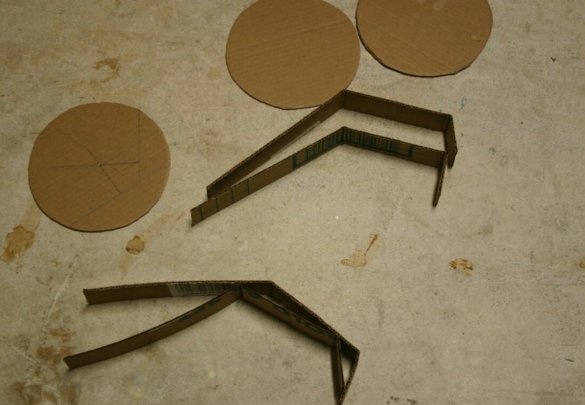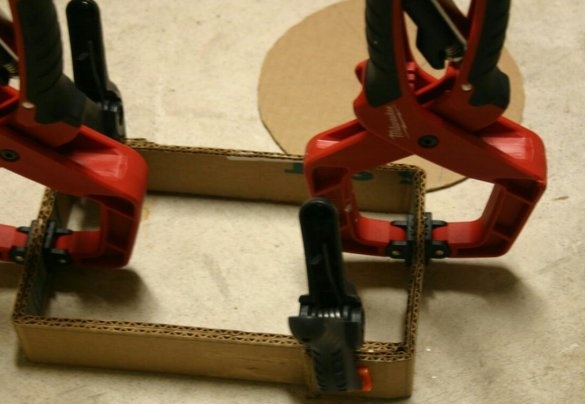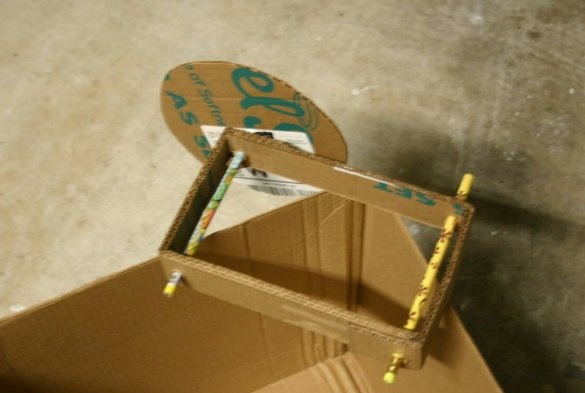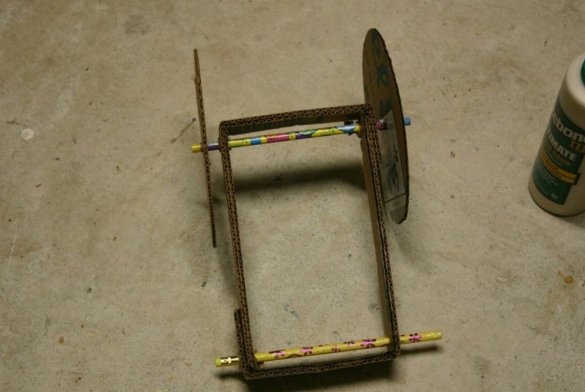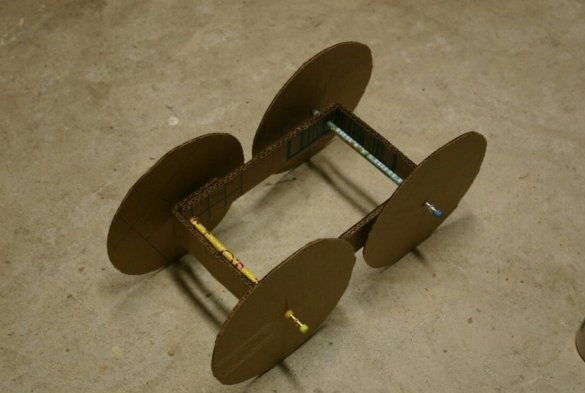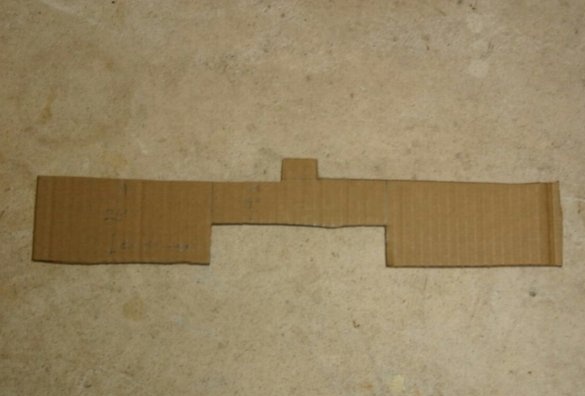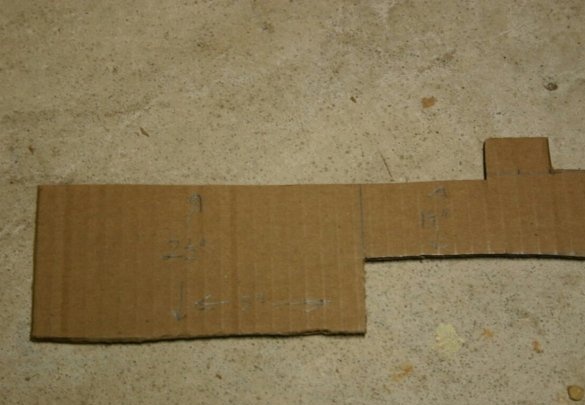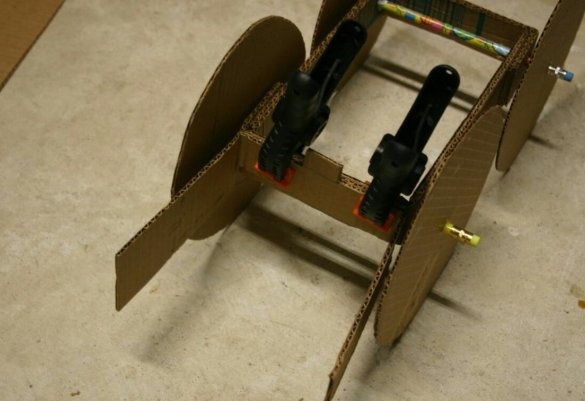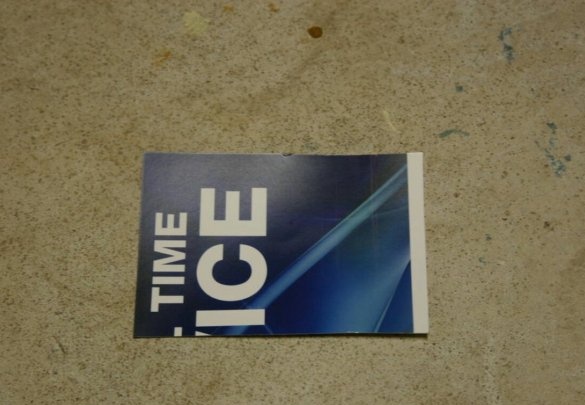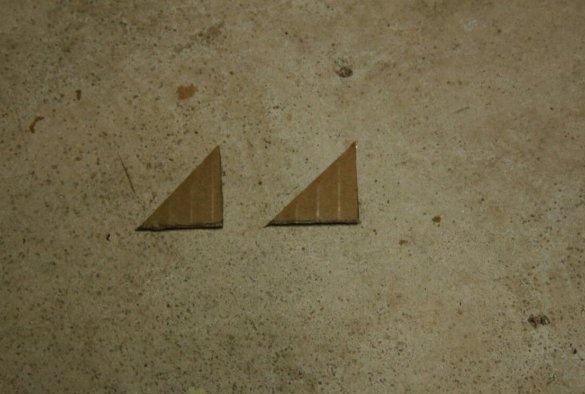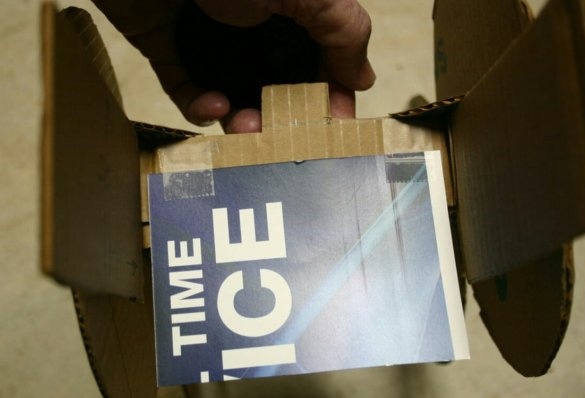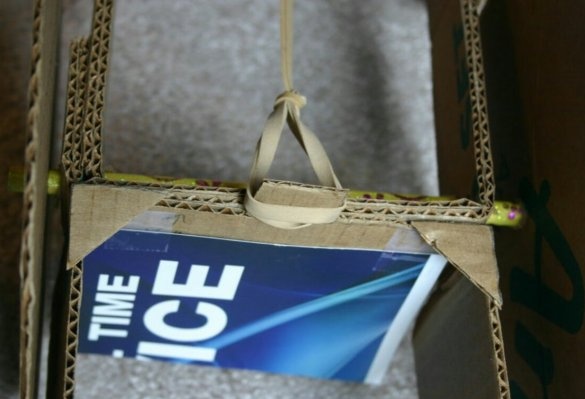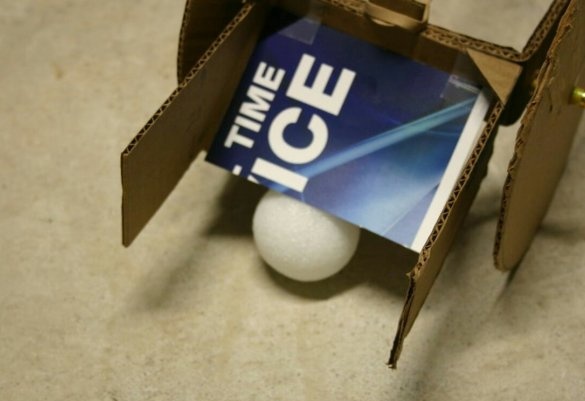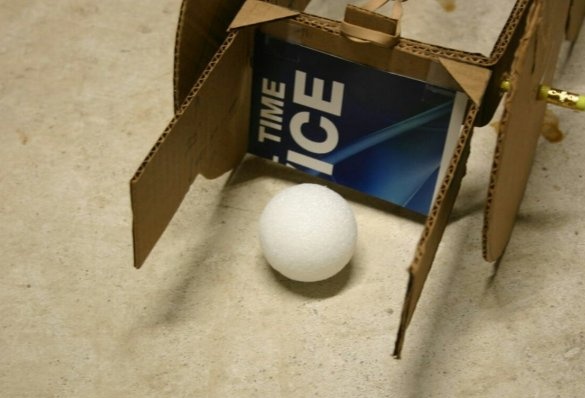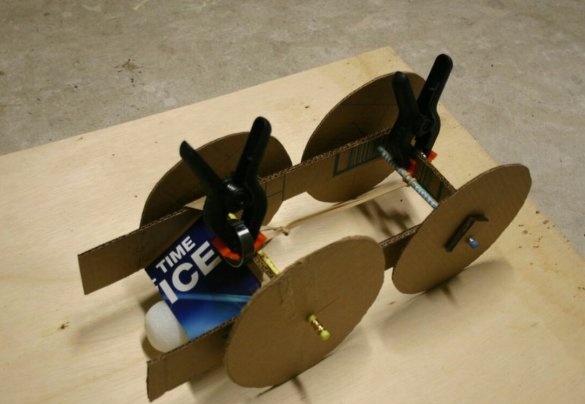The author of Instructables under the nickname MikeTheMaker was able to participate in a competition to develop a device of arbitrary design, reaching the ball, capturing it, and then returning with it to the point from where it was launched. And all this without the use of electricity, magnetism and nuclear energy (yes, it is directly stated in the original - the organizers of the competition have a good sense of humor). Well, let's see what solution the master suggested.
He begins by making wheels for the cart. They must be large enough so that the axis passes over the ball and does not hit it. As a template, he takes a can of paint with a diameter of 7 inches - this is about 180 mm. Homemade only in photographs it seems small, in fact, it is larger in size, as, indeed, is the ball.
Wheels are ready:
Using a pencil and a ruler, using well-known techniques from the school course of geometry, the master finds the center on each of the wheels:
The master marks four identical strips 38 mm wide and 380 mm long. It cuts them and bends each of them so that three segments are obtained: 50 + 130 + 200 = 380 mm.
Glues a straight-line frame from them, this will be the chassis of the trolley:
Using pencils as axles, he assembles a trolley. Pencils should freely rotate in the holes made in the frame, but keep tight in the holes made in the wheels. In general, while the task differs little from making a truck model in a labor lesson, the differences will begin further.
Then the master makes a trap for the ball:
It bends it and sets it on the trolley:
Cut the curtain and two triangles:
It places both on the trolley so that the curtain can recline, and the triangles provide a gap between the trap and the wheels. Adds a rubber motor and loads (not shown). As cargo, you can take several coins wrapped in paper.
It's time to check the ball returner in business. The master starts the rubber motor so that the trolley goes forward with the side opposite the trap. When she reaches the ball and passes over it, the curtain will rise, the ball will remain in place, and the cart will go further.
Then the whole rubber motor will unwind, the trolley will go further by inertia, and the rubber motor will start in the opposite direction. The cart will stop, after which it will drive back and will again reach the ball.
But the curtain cannot open in the opposite direction, and the side walls of the trap will not allow the ball to move sideways. The cart pushes the ball with the shutter approximately to the point from where it was launched, and then stops. The task set in the competition is achieved.
But before you go to the competition, the master checks the device several times, and it turns out that the wheels are not secured well enough. He corrects it this way;
Finally, it replaces the improvised loads of paper-wrapped coins with those shown in the following photo:
The competition of such returners can be no less interesting for viewers and developers than the competition of robots following the line.

